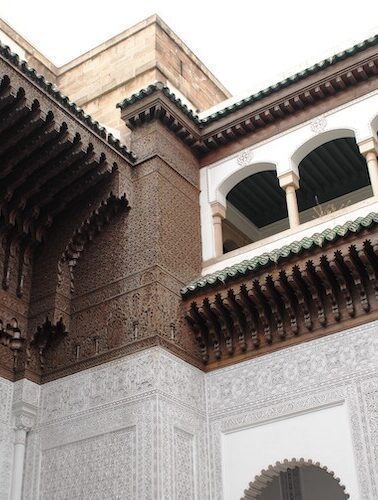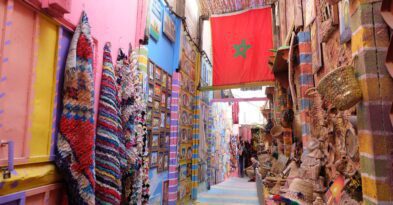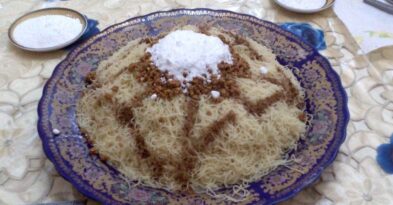Moroccan Architecture
Morocco is a captivating country with an ancient history that has left its mark in the form of architectural jewels across many cities. Magnificent examples of historical architecture can be found in the numerous palaces scattered throughout the land.
Its cities boast spectacular examples of Moroccan architecture, and visitors will be amazed by the diversity and uniqueness of each building. Morocco has remained faithful to its ancient traditions and cultures, not only in its lifestyle but also in its architectural style. They have successfully modernized their cities without losing the richness and beauty of the past.
Morocco represents a blend of many cultures. This is evident not only in the buildings themselves but also in the splendid gardens, extravagant decorations, and elaborate use of color. The country’s turbulent past is reflected in the massive desert fortifications and well-protected palace walls. It also manifests in the style Moroccans choose for decorating building interiors, transforming these architectural wonders and giving them a unique and majestic atmosphere.
Traditional townhouses or palaces with integrated gardens are called riads, meaning “house with garden.” Today these are primarily used as hotels or restaurants. Moroccan riads are known for their luxury amenities. They are tastefully decorated and often genuinely quite luxurious, offering visitors an immersive cultural experience where historical charm meets modern comfort in perfect harmony.
Ancient architecture

Ancient architecture has left its most prominent marks in northern Morocco, notably at Volubilis—a Roman city inscribed as a UNESCO World Heritage site since 1997. The old capital of Mauretania Tingitana, built at the ancient site of Oualili, is set in a beautiful landscape of olive groves bathed in sunlight.
In the shadow of the village of Moulay Idriss and at the foot of the massive Zerhoun mountain, the forum, triumphal arch, basilica, and houses decorated with mosaics reflect centuries of Roman occupation. When sunset gilds the Corinthian colonnades and broken pillars of the Capitolium cast long shadows, one can almost hear echoes of history spanning millennia.
Yet this magnificent site should not eclipse other ancient remains visible on Moroccan soil, such as Lixus, Banasa, and the Chellah archaeological site in Rabat. The Phoenician port ruins at Lixus testify to early Mediterranean trade; the Roman urban district of Banasa preserves complete city structures; while Chellah perfectly overlays Roman civilization with Islamic mausoleum architecture. Together, these scattered archaeological sites form a multi-layered historical mosaic, allowing every visitor to touch the cultural pulse that transcends time.
Berber Style
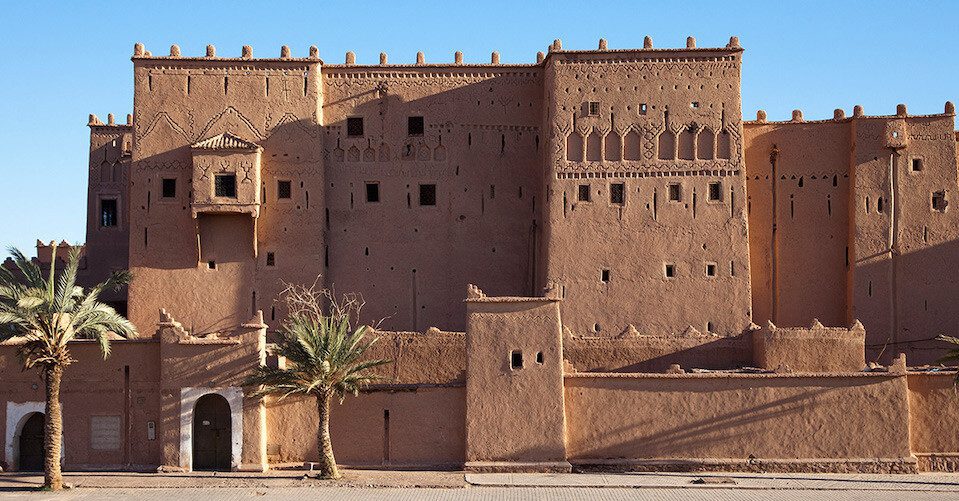
Drawing its roots from time immemorial, Berber architecture has left its mark on the lands of Southern Morocco. Ksour (fortified villages), kasbah (fortified houses), and agadir (fortified granaries) decorated with traditional geometric motifs illustrate the magnificence of the Berber style. Constructed from rammed earth, Berber buildings utilize materials readily available in the environment. It is this organic matter, known as pisé, that gives Berber architecture all its strength and beauty.
Natural and organized, the mud-brick architecture blends gracefully with the southern landscapes. This earthen architecture is both fragile and ecological. In the absence of concrete restoration measures, these castles of earth and reeds, witnesses to Morocco’s history, could disappear forever. While awaiting rescue, guesthouses, eco-lodges, and other charming accommodations are embracing the virtues of adobe habitat, skillfully combining traditional building techniques with modern comforts to give new life to ancient wisdom.
Portuguese influence
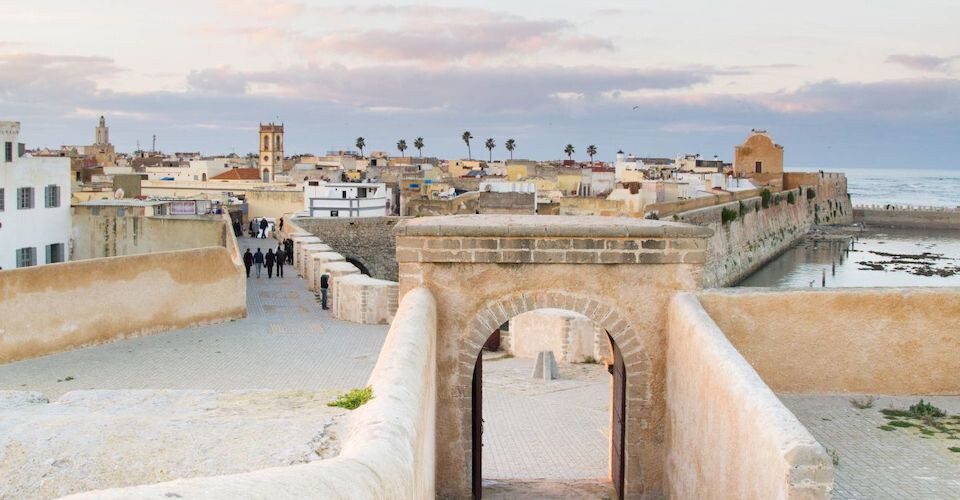
From El Jadida, Essaouira, Asilah, Azemmour to Safi—all these cities share a common architectural heritage linked to the Portuguese presence on Moroccan soil.
Witnesses to 354 years of Portuguese expansion, the defensive fortifications facing the blue waters of the Atlantic recall an era when Mazagão (now El Jadida) and Mogador (today’s Essaouira) housed impregnable military enclaves. These Moroccan cities preserve superb examples of Portuguese architecture that dot the long, sun-drenched sandy beaches. The stunning vaulted cistern in El Jadida filters starlight through its roof, the regular grid streets of Essaouira still guide travelers, and the Manueline stone carvings blending Moorish influences on Asilah’s doors and windows continue to captivate. These architectural treasures not only document colonial history but have become enduring cultural landmarks along the Atlantic coast, connecting two continents through the rhythm of tides.
The Arab-Andalusian tradition
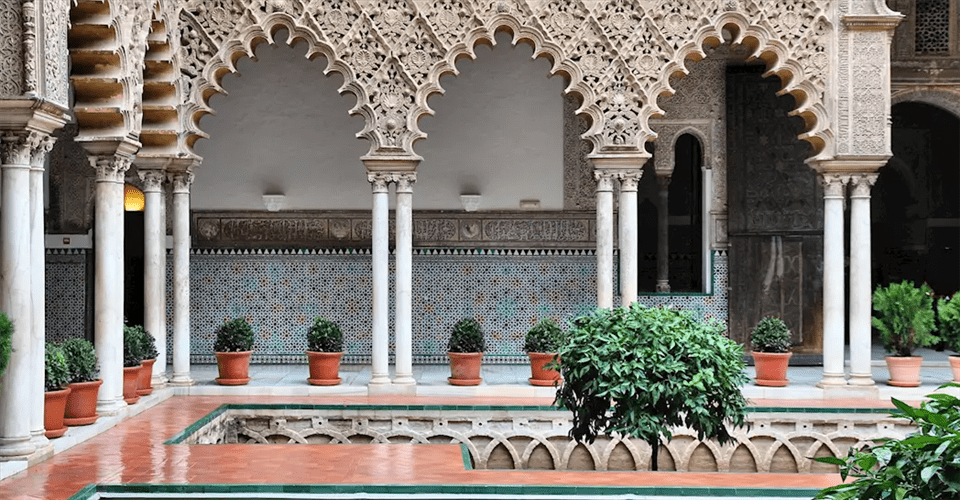
While far from representing the full diversity of Moroccan architecture, the Hispano-Moorish style is what immediately comes to mind when evoking the Sherifian Kingdom. Minarets, mosques, caravanserais, fortifications, monumental gates, and palaces covered in calligraphy and arabesques evoke the wealth and refinement of this urban tradition inherited from Al-Andalus.
Imported from Córdoba by the Almoravids, the Hispano-Moorish tradition enjoyed its golden age under the Almohad dynasty, which saw great minarets flourish such as the Koutoubia (Marrakech) and the Hassan Tower (Rabat). The keywords for Almohad architects and artisans were purity and grandeur. Under the Marinids, austerity gave way to the delicacy of decoration inspired by the Nasrid art of Granada. The subsequent dynasties witnessed the emergence of Morocco’s greatest builders, such as the Iranian-born Sultan Ahmed El Mansour and the Alaouite sovereign Moulay Ismail, whose monumental projects elevated Moroccan architecture to new heights, creating an eternal dialogue between artistic spirits of different eras in stone and wood.
Colonial Architecture
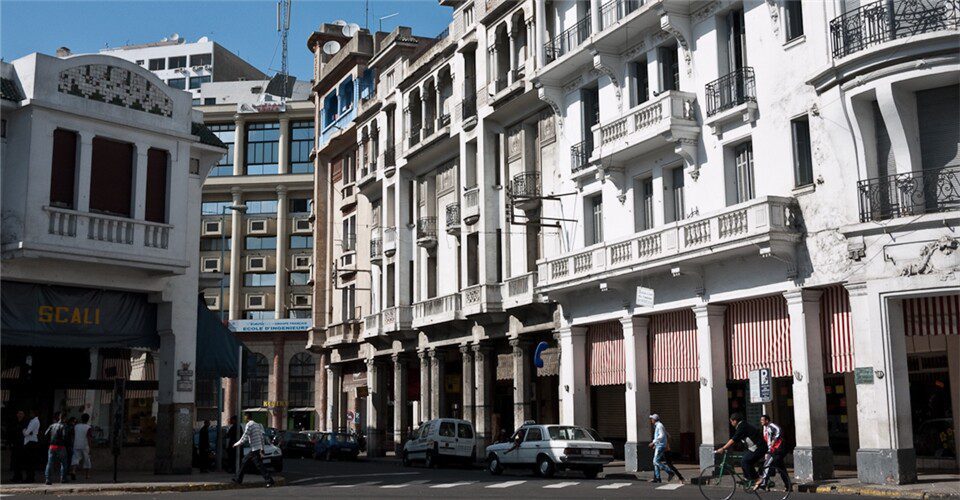
The colonial architecture of Morocco transports travelers back to the first half of the 20th century. Casablanca and Rabat, then under the French Protectorate, witnessed new urban spaces flourish under the leadership of Marshal Lyautey, the Resident-General at the time. Colonial houses, Art Nouveau buildings, Art Deco structures, and Neo-Moorish or Bauhaus-style edifices emerged in the new European quarters, marking their presence alongside the ancient centers—the medinas.
Today, these old historic centers scattered throughout Moroccan cities evoke the decaying neighborhoods of Havana more than the roaring twenties. Threatened by authorities’ indifference and real estate speculation in major urban centers, the colonial heritage is finally gaining attention from heritage protection associations. These buildings, frozen in time, bear witness to both Morocco’s modernization and the complex memory of colonial history—serving not only as galleries of architectural art but also as cherished “cities of memory” worth preserving for future generations.
Contemporary style
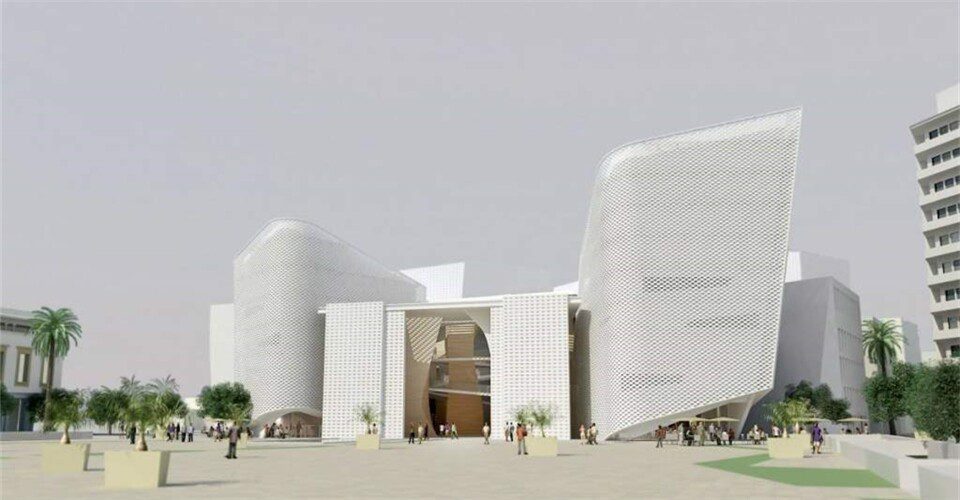
This isn’t the style we typically imagine when speaking of Morocco. However, contemporary architecture is poised to transform the Kingdom’s landscape in the coming years. The Morocco Mall in Casablanca, the National Library in Rabat, and the Maroc Telecom Headquarters in Rabat have already become landmarks of the new era.
These modern landmarks not only demonstrate Morocco’s forward-looking vision but also reinterpret traditional elements through innovative approaches—flowing geometric lines echo ancient mosaic patterns, glass facades reflect the shifting light of the desert, and steel structures continue the precise craftsmanship of traditional woodwork. In this dialogue between tradition and modernity, these buildings maintain respect for cultural heritage while showcasing the courage to embrace innovation, sketching a dynamic future vision for Morocco that honors its past while boldly stepping into tomorrow.
Moroccan architecture tells an epic story written in earth, stone, and faith. From the red clay fortresses of the Atlas Mountains to the blue-and-white medinas along the Atlantic coast, from the crumbling pillars of ancient Roman ruins to the sleek glass facades of modern cities — every structure in this land serves as a witness to civilizations conversing across time. Blending traditional Islamic geometry, Berber earthen craftsmanship, colonial-era Art Deco, and contemporary design, these buildings embody a timeless wisdom: the art of innovating through preservation.
Contact us for more travel information!

